Treeing Walker Coonhound Dog Breed
The Treeing Walker Coonhound stands out for its agility, scent-tracking solid skills, and unique baying sound. This breed has earned its place as a skilled hunter and a beloved pet. They were initially bred for hunting raccoons, showing a deep history tied to American hunting. Yet, many people don’t realize how well these dogs adjust to being family pets. They’re intelligent and friendly, which shows there’s more to them than just hunting.
These dogs fit well into home life, even though they’re known for their hunting skills. Their intelligence and friendly nature mean they have much to offer beyond their traditional roles. As dog ownership changes, we must consider how the traits of breeds like the Treeing Walker Coonhound fit into modern life with humans.
Key Takeaways
• Treeing Walker Coonhounds excel in agility and scent-tracking.
• They’re not just hunters; they make great family pets.
• These intelligent dogs adapt well to modern home life.
The Treeing Walker Coonhound is known for its exceptional agility and ability to track scents. Despite their hunting origins, they are also affectionate and integrate seamlessly into family settings, proving their versatility. Their intelligence allows them to adapt effortlessly to the evolving role of dogs in contemporary domestic life.
Quick Facts
The Treeing Walker Coonhound stands out for its exceptional ability to hunt and move quickly. It was recognized by the United Kennel Club in 1945 and the American Kennel Club in 2012. This dog is a master at hunting and is known for its sharp sense of smell and fast movement over large areas. Its history starts in the Colonial era, from mixing English Foxhounds, which improved its tracking skills.
Known for being intelligent, brave, and calm, the Treeing Walker Coonhound is often called ‘The People’s Choice.’ These dogs are great at following the scent of large animals like bears, cougars, and raccoons. With the proper training, they can be a good fit for families.
Treeing Walker Coonhound Dog Breed Pictures
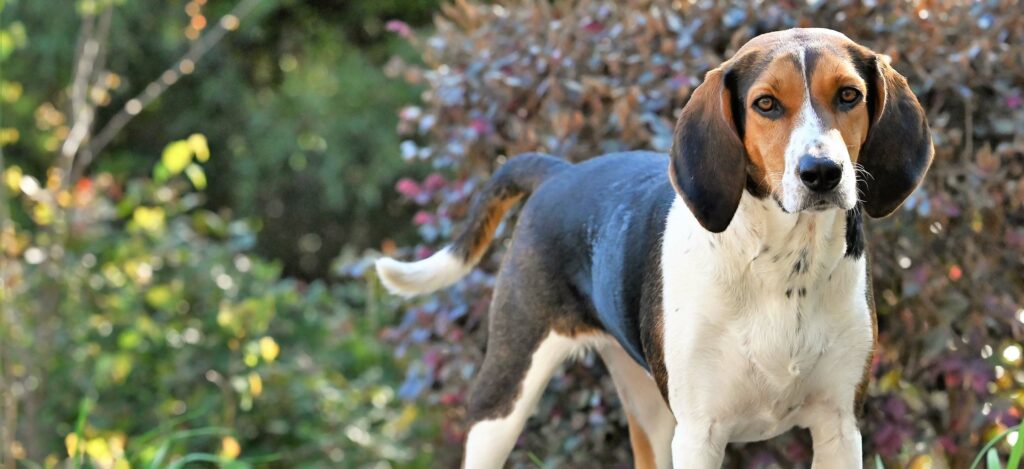
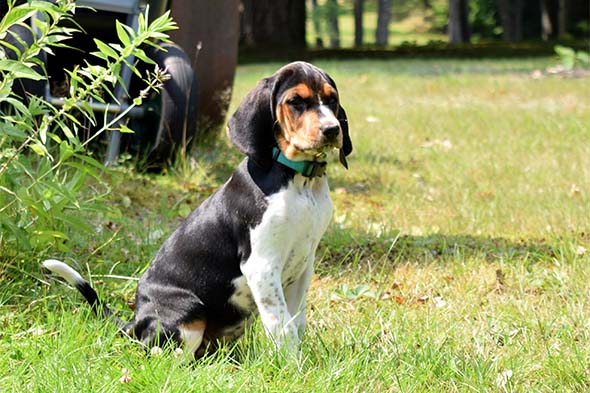
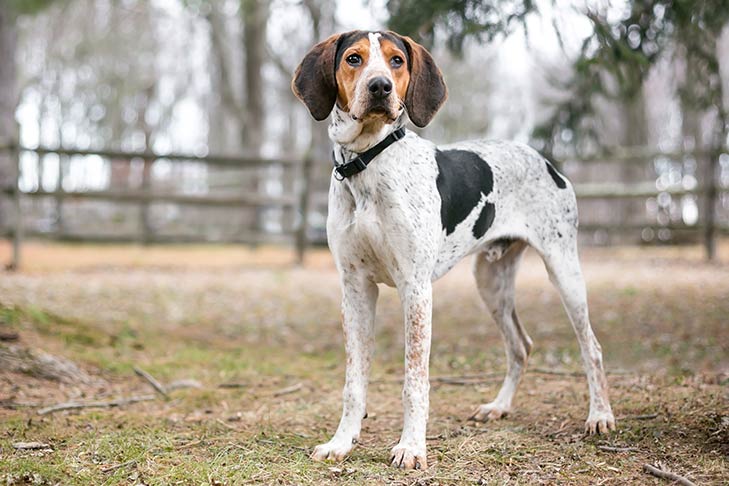
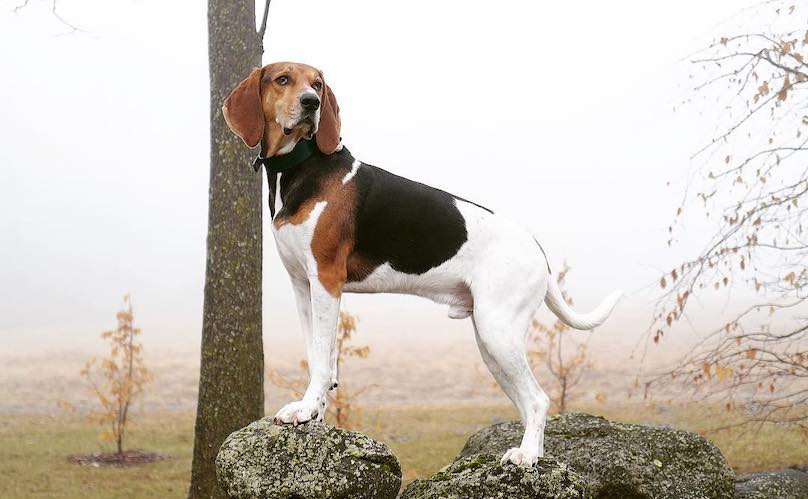
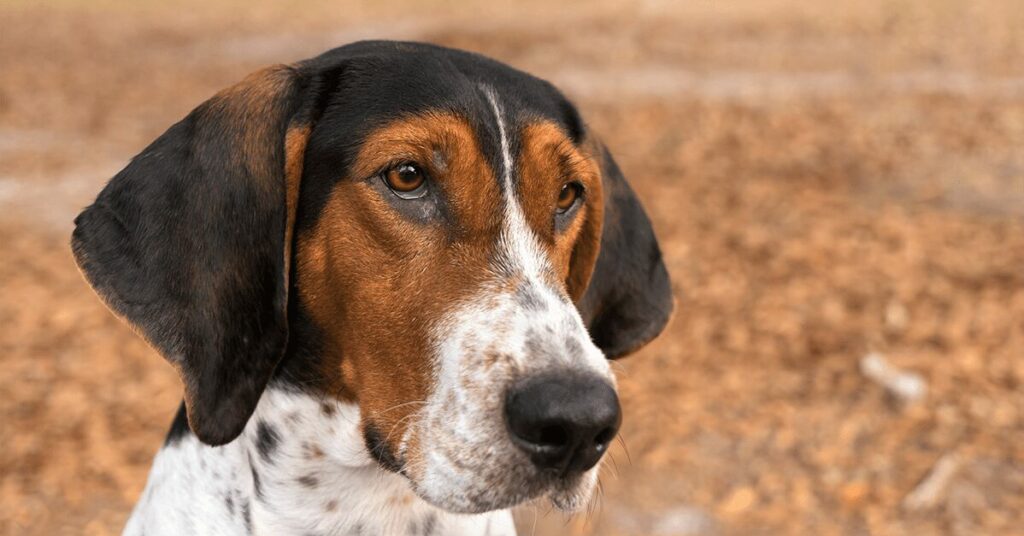
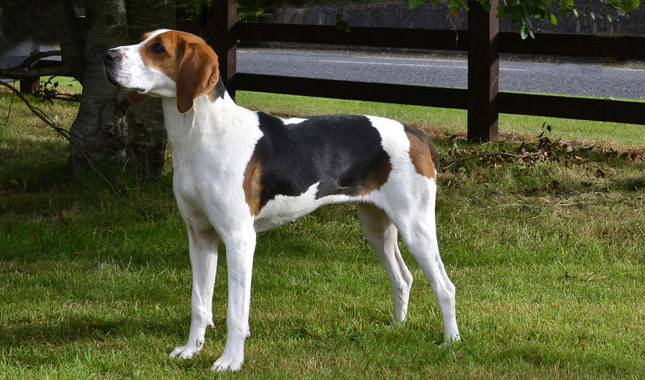
Treeing Walker Coonhounds Overview
Characterized by its agile nature and acute olfactory senses, the Treeing Walker Coonhound excels as a hunting companion, demonstrating a remarkable capacity for tracking and treeing game across diverse terrains.
As a medium to large-sized canine, this breed’s morphology is fine-tuned for endurance and speed, attributes critical for pursuing quarries such as raccoons and larger predators.
The genetic lineage of the Treeing Walker Coonhound, derived from selective crossbreeding with the American Foxhound, has endowed it with a glossy, maintenance-efficient coat and a vocalization pattern distinct to its hunting methodology.
Scientific observation confirms its temperament to be amiable and cooperative, fostering compatibility with other canines and integration into human family structures, provided that adequate training is instituted.
Distinctive Traits & Capabilities
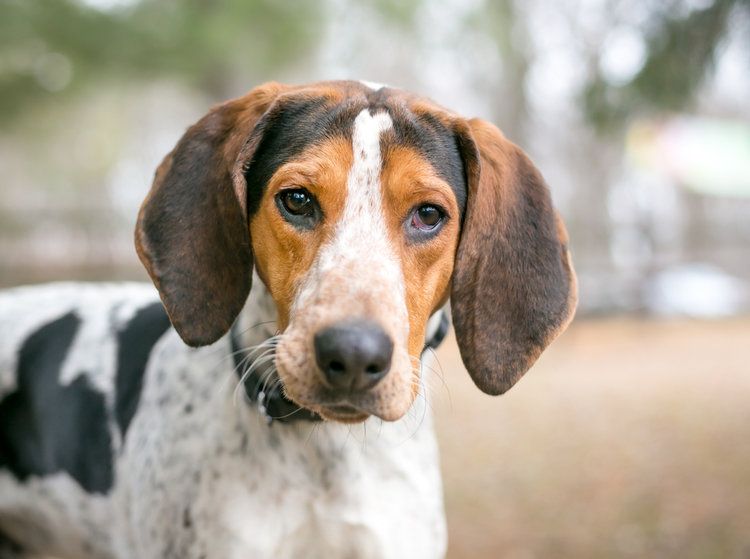
The Treeing Walker Coonhound is known for its exceptional hunting skills. This dog breed stands out for its ability to track and tree game, making it a top choice for hunters. These dogs are incredibly agile and have a powerful sense of smell, which lets them quickly move over large areas and detect various animal scents with impressive accuracy. Their physical build, with a broad head and a long nose, boosts their ability to smell. They also have a sleek, shiny coat that helps them blend into the woods.
| Trait | Function |
|---|---|
| Intelligent | Improves their tracking and problem-solving |
| Courageous | It helps them adjust to different hunting environments |
| Adaptable | It makes it easier to follow different types of game |
| Strong Tracking Instinct | Makes it easier to follow different types of game |
The Treeing Walker Coonhound’s ability to hunt solo or with others shows its flexibility for various hunting situations. This breed’s talents make it a valuable companion for those looking to pursue in the wilderness. The dog’s versatility is a significant advantage for hunters facing changing conditions and different kinds of prey.
Hunt Raccoons: Origins and Development
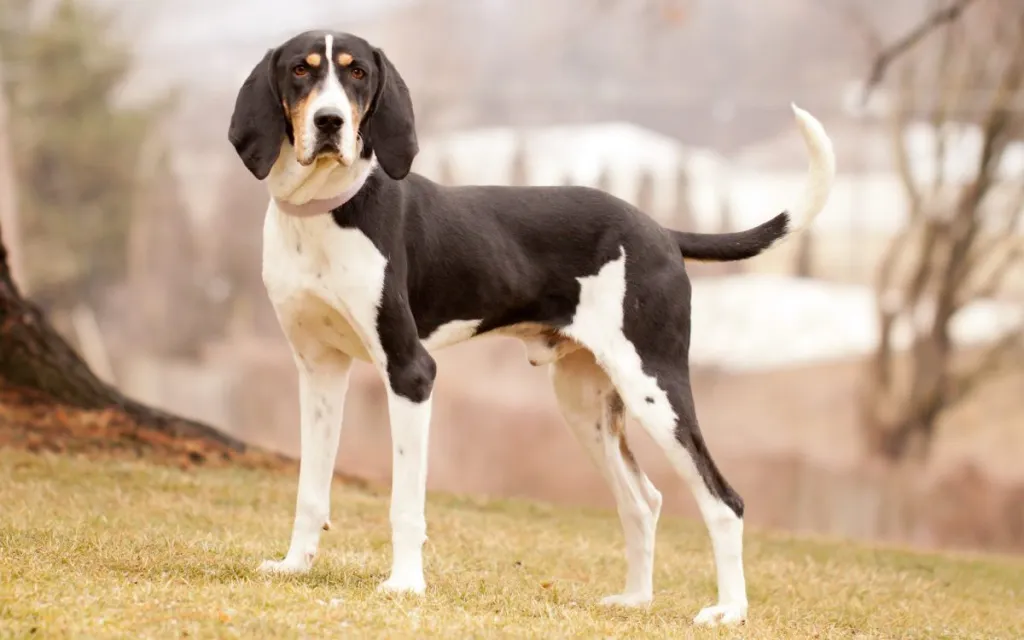
The Treeing Walker Coonhound has a rich history rooted in careful breeding to improve its hunting talents. This breed results from a combination of English Foxhounds with other hound breeds. Their keen sense of smell and physical agility come from their ancestors. Over time, breeders have focused on enhancing their skills in tracking and cornering prey in trees. The dog’s ability to hunt at night and its unique bark were shaped by both natural selection and the needs of hunters.
The breed was created by mixing English Foxhounds and other types of hounds. The Treeing Walker Coonhound’s exceptional nose and agility are thanks to its forebears. Years of breeding for specific traits have sharpened its ability to track and tree animals. Adaptation to hunting in the dark and its distinct call are results of natural and human-influenced evolution.
Breed Inception Roots
Emerging from the mid-18th century, the Treeing Walker Coonhound’s lineage was forged through strategic crosses of English Foxhounds by notable breeders John W. Walker and George Washington Maupin. The acquisition of a stolen dog, Tennessee Lead, was pivotal in the breed’s inception. Tennessee Lead’s superior olfactory insight, agility, and prowess in nocturnal hunts significantly enriched the genetic pool, enhancing these desired traits in subsequent progeny.
Official recognition by the United Kennel Club (UKC) in 1945 and later by the American Kennel Club (AKC) in 2012 marked the breed’s establishment and differentiation from the English Coonhound. This scientific demarcation underscores the breed’s tailored breeding objectives aimed at optimizing coon hunting efficiency, reflecting the Treeing Walker Coonhound’s specialized role within Southern cultural heritage.
Ancestral Breed Influence
The Treeing Walker Coonhound, a hunter’s choice, has a lineage that dates back to the 1700s. It is a blend of the English Foxhound’s bloodline and the hunting prowess of Tennessee Lead. Thomas Walker was instrumental in shaping this breed when he brought the English Foxhound to Virginia. His efforts laid the groundwork for what would become the Treeing Walker Coonhound.
Breeders John W. Walker and George Washington Maupin carefully selected for traits like sharp senses, stamina, and speed. Their work crafted a coonhound that excels in hunting. Today, major kennel clubs acknowledge the breed as a testament to its storied past and its effectiveness as a hunting partner.
This dog is exceptionally skilled at chasing game up trees and uses its strong sense of hearing to communicate during the hunt.
Evolution of Hunting Skills
The Treeing Walker Coonhound has come a long way since the 1700s, transforming into an expert at tracking and cornering prey in the trees. The breed’s journey was pivotal when Tennessee Lead was bred with a Walker Foxhound, creating a lineage skilled in night hunts. This mix gave the Treeing Walker Coonhound sharper senses, perfect for spotting and chasing animals like raccoons up into the branches.
These dogs use a variety of barks to communicate during the hunt, which helps the pack work together and informs the hunter of the chase’s progress. Their sounds, from long calls while on the trail to quick barks when prey is found, show how their hunting methods and teamwork have developed.
The Treeing Walker Coonhound excels at hunting alone or with others, making it a versatile and practical breed.
Characteristics of the Treeing Walker Coonhound
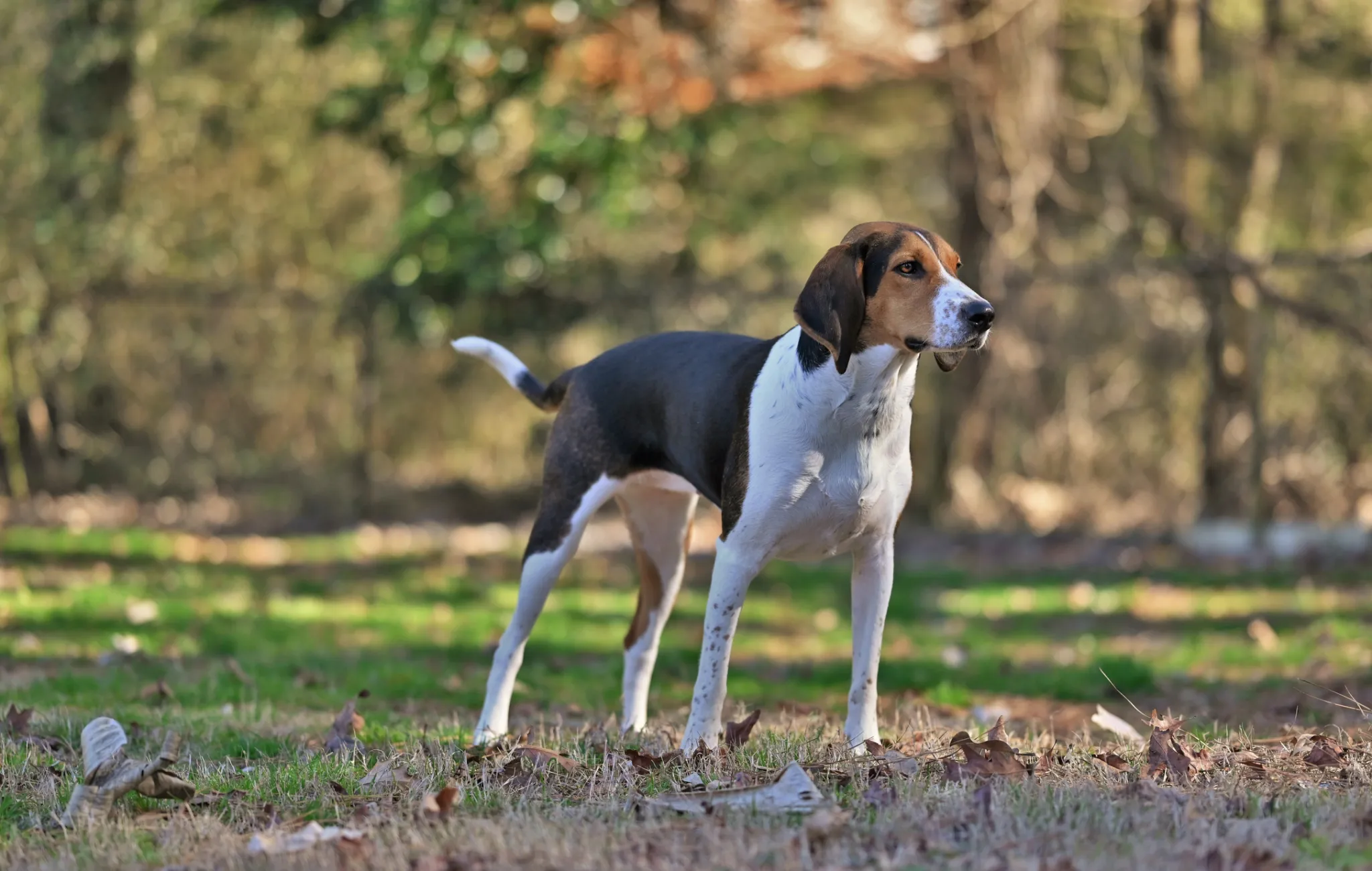
The Treeing Walker Coonhound stands out with its distinct physical characteristics tailored for hunting. Within this breed, size differences between genders are apparent, with males generally outgrowing females.
Their robust muscles allow them to move quickly and tirelessly across different landscapes. The coat serves a dual purpose: it shields them from thick undergrowth and features unique patterns for easy recognition.
Their long ears and strong legs also improve their scent and sound-tracking skills, making them exceptional hunters.
Breed Size Characteristics
Treeing Walker Coonhounds are medium to large-sized dogs, with males standing between 22 and 27 inches and females between 20 and 25 inches. These dogs have a robust and agile build from their history as hunting dogs bred for their endurance and quickness. They have a broad head, a lengthy snout, and ears that hang down, all traits that suit their size and the job they were bred to do. Their short, shiny coat can be either tricolor or bi-color, which covers a body built for stamina and strength.
Male Treeing Walker Coonhounds weigh between 50 and 70 pounds, while females tend to be slightly lighter. This weight contributes to their ability to hunt a variety of game, both big and small. These dogs have a healthy lifespan, typically 12 to 13 years, which is a testament to their overall sturdy health.
Athletic Build Details
Treeing Walker Coonhounds stand out with their muscular yet graceful build, perfect for their active roles. They are well-proportioned, with males standing between 22-27 inches and females at 20-25 inches. Their weight ranges from 50-70 pounds, showcasing a solid yet agile body shape. These dogs move with forceful endurance, quickly covering vast areas during a hunt.
Their physical features, like the broad head, long nose, and floppy ears, are not just for looks but also enhance their hunting abilities. The shiny coat, which comes in tricolor or bicolor patterns, adds to their sleek look. These dogs excel in hunting competitions because of their quickness, sharp sense of smell, and intelligent decision-making.
Coat and Markings
Treeing Walker Coonhounds have a sleek and shiny coat that showcases a mix of two or three colors, often making them stand out in the wilderness. These dogs have a skin and coat system designed for toughness and easy care, which lets them move smoothly across different environments.
Their coat comes in black, white, and tan, making them easier to spot by those who hunt with them. Their genes influence their coat patterns, which helps maintain a consistent look in line with the breed’s standards.
The coat protects the dogs from the weather, and their specific patterns are vital for communication and signaling during hunts.
Distinctive Physical Traits
The Treeing Walker Coonhound is not just known for its beautiful coat and patterns; its body is also built for agility and stamina during hunts. These dogs have an impressive height range of 20-27 inches and typically weigh between 50-70 pounds. Males are usually larger than females due to sexual dimorphism.
Their anatomy includes a broad skull, long muzzle, and long ears, which help them track scents effectively. Their skin is covered with a shiny, smooth coat that is either tricolor or bicolor. They have a solid and muscular body, which allows them to chase prey quickly and for long periods.
A unique feature of this breed is their vocalization; they have a distinctive call that changes from a deep bay to a sharp chop when they have cornered their prey.
Growth and Weight Patterns
Treeing Walker Coonhounds usually reach full maturity between 12 and 18 months. Male dogs often stand between 22 and 27 inches tall at this stage, while females range from 20 to 25 inches. Their weight typically falls between 50 and 70 pounds.
Monitoring their diet and exercise routine is crucial to support their health during their growth phase. Regular check-ups with a vet and using breed-specific growth charts can help track their development and prevent potential health issues.
Keeping an eye on this breed’s optimal growth and weight is essential for their overall well-being and can contribute to a longer life.
Behavioral Profile

The Treeing Walker Coonhound has a complex behavioral profile shaped by their history as hunting dogs and their ability to be loyal pets. Understanding these behavioral traits is critical to recognizing their fit for different homes and jobs.
Below are some primary behaviors to note:
- The breed is known for its consistent temperament, ideal for hunting and integrating into a family.
- They are also known for their distinct, musical bark when on the scent of game.
- Intense hunting instincts mean training from a young age is necessary to manage their chasing behaviors.
- Since they come from a lineage of hunters, socializing them early is critical to ensure they get along with other animals.
Temperament Traits
Treeing Walker Coonhounds are known for their calm and loving personality. They are perfect for both family life and hunting tasks. These dogs are intelligent and self-assured, which helps them build strong relationships with people. They’re easygoing and need a comfortable environment, making them great pets. Their low tendency to be aggressive, along with their good nature with kids and other dogs, makes them ideal family dogs.
These hounds have a natural talent for tracking and are very quick, which stands out during raccoon hunting events. They show their adaptability and skill in hunting, which has made them well-regarded in these circles.
Vocalization Tendencies
Treeing Walker Coonhounds are known for their strong vocal abilities. These dogs produce sounds ranging from clear, trumpet-like calls on a trail to a short, repetitive bark when they’ve trapped their target up a tree. Their barking is more than just noise; it’s a crucial part of how they communicate with hunters during a chase.
Each sound they make has a specific meaning, which tells the hunter about the prey and where they are in the hunt. The Treeing Walker Coonhound’s communication is similar to the Beagle’s and combines instinct and careful strategy. This makes them incredibly effective when hunting animals like raccoons, bobcats, and even bigger predators.
Their ability to make these sounds and their speed and agility make them an excellent partner for hunters.
High Prey Drive Management
Understanding the Treeing Walker Coonhound’s vocal prowess helps us grasp their strong hunting instincts, which need careful management. Implementing consistent training is crucial in guiding their behavior. Using rewards to shape their actions helps steer their natural hunting instincts in a positive direction. It is critical to keep their minds busy with activities that satisfy their need to hunt. Toys and games that mimic hunting can be used to burn off their energy safely.
A strong recall command is essential to control the dog around potential prey, reducing the chances of unwanted behavior.
Training a Treeing Walker Coonhound requires patience and understanding of their needs. Consistent training and mental stimulation are vital for managing their prey drive. Activities that resemble hunting help the dog use its energy constructively. Recall commands are fundamental to keep the dog safe and responsive to you, even when they’re tempted to chase.
Socialization With Pets
Treeing Walker Coonhounds are known for their friendly nature. When they are trained well and introduced to new experiences early, they tend to get along with other pets in the home. These dogs are intelligent and enjoy being around people, which helps them get on well with other animals. They are usually calm, making them good companions for other dogs and kids. This suggests they are likely to be sociable if they are appropriately introduced to different animals from a young age.
Introducing a Treeing Walker Coonhound to smaller pets early on can help control their natural hunting instincts. A structured approach to socializing them with other animals is crucial in forming strong cross-species friendships. It’s also essential to manage their instinct to hunt and their tendency to be vocal to ensure a peaceful home environment.
Exercise Requirements
Treeing Walker Coonhounds needs a lot of daily exercise to stay healthy in body and mind. Without regular, energetic activities, they can develop unwanted behaviors. Mixing mental challenges with their workouts helps keep them from getting bored and acting out.
For example, scent-based games and tracking exercises make the most of their natural smell skills and keep their minds sharp.
Treeing Walker Coonhounds should get plenty of aerobic exercise to increase their energy levels. Long walks and dog sports like agility are great for this. These activities help them stay calm and prevent chewing or digging out of boredom or excess energy.
Pet Parents Wellness Considerations
In the context of Treeing Walker Coonhounds, a comprehensive approach to wellness is paramount for sustaining their physiological and psychological health. This approach encompasses:
- Health Screening Tips: Proactive measures, including genetic testing and regular veterinary check-ups, to detect predispositions to diseases such as hip dysplasia and eye disorders.
- Diet and Nutrition: An evidence-based nutritional plan tailored to support their metabolic needs and prevent obesity is expected in less active individuals.
- Exercise Requirements: Adequate daily physical activity to fulfill their innate drive for exploration and scent tracking, mitigating potential behavioral issues.
- Environmental Enrichment: Strategies to provide mental stimulation and mitigate stress are crucial for their well-being.
Common Health Problems
Regular vet exams are essential for the well-being of Treeing Walker Coonhounds. These check-ups can catch health issues early on, making them easier to treat.
Keeping an eye on the dog’s weight is vital to prevent obesity-related diseases. A good diet and regular exercise help maintain a healthy body condition score.
Keeping their teeth clean and checked is essential to avoid gum disease, which can affect their overall health.
Treeing Walker Coonhounds love the outdoors, which means they’re at risk for parasites like ticks. Regular checks and treatments are necessary to keep them parasite-free.
Due to their floppy ears, you should check for signs of ear infections and keep their ears clean to prevent problems.
Diet and Nutrition
Caring for a Treeing Walker Coonhound means getting the right food and enough exercise. High-quality dog food rich in nutrients is vital to keeping them healthy. To prevent obesity, it’s also important to watch how much they eat, which can lead to other health issues.
Physical activity should be part of their daily routine to keep them fit and happy. Working with a veterinarian can help determine if your dog needs any extra vitamins or supplements. And, because every breed is different, you should be aware of any special dietary needs or allergies your Coonhound might have to keep their immune system strong.
Exercise Requirements
How do you keep a Treeing Walker Coonhound healthy and happy? Their exercise needs are critical. For these energetic dogs, activities like running and hiking are crucial. They help burn off the breed’s natural energy. This isn’t just good for their body; it also keeps them from getting bored and acting out.
Try adding scent games and puzzle toys to their routine to keep their minds sharp. This keeps their brains busy and helps prevent boredom. It’s also essential to keep them on a regular exercise schedule.
This will help your Treeing Walker Coonhound avoid putting on extra weight and keep their heart healthy for a long and vibrant life.
Bred to Hunt: Essential Maintenance Practices
Maintaining the well-being of a Treeing Walker Coonhound is fundamental for their health. To keep these dogs in top shape, you should:
- Regularly groom their coat to keep their skin and coat in prime condition.
- Provide enough physical activity to maintain heart health and keep weight under control.
- Offer a diet that meets the nutritional needs of this breed’s energy levels.
- Schedule consistent health check-ups to catch and address health problems early.
Regular grooming is not just for looks; it prevents skin infections and matting. Exercise is more than running around; it’s about keeping your dog’s heart strong and preventing joint issues from being overweight. A balanced diet is the key to providing the energy and nutrients a Coonhound needs. Regular vet visits can catch issues like hip dysplasia or ear infections, shared in this breed before they become serious.
Regular Grooming Routine
A systematic grooming regimen is essential for a Treeing Walker Coonhound’s coat and skin health. Customize the routine to meet the specific needs of this breed.
Use a rubber curry brush to effectively remove loose fur and distribute the dog’s natural oils for a shiny coat. A slicker brush can help untangle knots and clear away debris.
The frequency of baths depends on how active your dog is and how much dirt they get into. Use a gentle dog shampoo to prevent skin irritation.
Regularly trimming your dog’s nails can prevent discomfort from overgrowth. It’s also vital to check their teeth and ears regularly and keep them clean for overall health.
Exercise Requirements
For a Treeing Walker Coonhound to stay healthy and energetic, they need daily exercise that gets their heart pumping. Experts agree that these dogs must get plenty of exercise to prevent destructive behaviors caused by boredom.
They thrive on long walks, running, and dynamic activities like agility training or playing fetch, keeping their minds and bodies in shape. Using their natural talent for sniffing things out in activities such as tracking or scent work is also great for keeping their brains busy.
Playtime that includes puzzle toys can also help keep things interesting for them. Maintaining consistent exercise is vital to stopping destructive habits and keeping up their natural zest for life.
Nutritional Needs
A well-rounded diet is critical for the health of Treeing Walker Coonhounds. To stay healthy, these dogs need a mix of proteins, fats, carbohydrates, vitamins, and minerals. It’s essential to monitor their weight, adjusting their food based on age and activity. They also need plenty of clean water to stay hydrated.
It’s a good idea to talk to a vet to understand the specific nutritional needs of this breed. They can help determine if your dog needs any extra vitamins or minerals. Be on the lookout for signs that your dog isn’t reacting well to their food, and be ready to change their diet if needed to avoid health issues.
Health Check-Ups
A balanced diet is essential, but annual health check-ups are just as crucial for the health of a Treeing Walker Coonhound. These check-ups should include a full assessment, looking at vaccinations and measures to prevent parasites, which help protect your dog from infectious diseases. Regular dental check-ups are also necessary to prevent tooth and gum issues from causing more severe health problems. Assessing your dog’s diet is critical to preventing obesity, which can lead to joint and metabolic issues.
It’s also good practice to screen for genetic issues like hip dysplasia and eye conditions that are common in this breed. Regular vet visits are the cornerstone of maintaining your dog’s health, helping them live a long and happy life.
Behavioral Training Tips
When training Treeing Walker Coonhounds, positive reinforcement like treats and praise is vital in shaping their behavior. They respond well when they know they’ll get something good for obeying a command.
Since they’re independent, patience and consistency are must-haves in your training toolbox. Mixing up when you give rewards, known as variable reinforcement, can make them learn better and remember commands longer.
To keep these dogs from getting into trouble out of boredom, ensure they get plenty of exercise and things to consider.
Getting them used to being around other animals and people early on is also critical so they learn how to play nice.
If you still have trouble with your Coonhound’s behavior, don’t hesitate to ask a professional dog behaviorist for help. They can give you advice specific to your dog’s needs, helping them become well-behaved pets.
Nutritional Requirements
Nutritional Needs for Treeing Walker Coonhounds
For the health and performance of a Treeing Walker Coonhound, it’s essential to provide a diet that meets their unique needs. A good diet helps keep them in top shape for all their activities. Here’s what to consider:
High-quality protein is vital for maintaining and repairing their muscles. These dogs are active and need strong muscles to support their lifestyle. While protein is essential, they also need the right mix of fats and carbohydrates to stay energetic and healthy.
Their caloric intake should match their lifestyle. Active dogs need more calories, while less active ones require fewer. Age and weight also affect how much food they should eat. Feeding them the right calories helps prevent obesity and keeps them fit.
Giving them several small meals throughout the day is better than one. This approach helps with digestion and energy levels. Smaller meals can prevent bloating and discomfort, common in larger breeds.
Hydration is non-negotiable. Water is vital for their metabolic processes and helps them regulate their body temperature. Always ensure they can access fresh water, especially after exercise or in hot weather.
Balanced Diet Essentials
To keep a Treeing Walker Coonhound healthy and energetic, their diet must include high-quality protein, good fats, complex carbs, and various vitamins and minerals.
Lean proteins, such as fish, chicken, and eggs, are crucial for muscle health and help with repair and growth. These proteins contain essential amino acids for a dog’s body to function correctly.
Healthy fats are also a vital part of a Coonhound’s diet. Omega-3 and omega-6 fatty acids in fish oil and flaxseed help keep their skin and coat in good condition. They also play a significant role in controlling inflammation.
For energy that lasts, carbohydrates like whole grains and vegetables are best. They support a healthy metabolism and keep the digestive system running smoothly.
Including a variety of fruits and vegetables in the diet provides valuable phytonutrients. These nutrients strengthen the immune system, which is essential for a dog’s well-being.
When planning meals for a Treeing Walker Coonhound, it’s essential to consider all these components to ensure their diet is balanced.
Feeding Frequency Guidelines
When feeding a Treeing Walker Coonhound, you must consider their age, activity level, and metabolism. This helps ensure they get the right amount of food for good health.
Puppies often need to eat more – usually three to four meals daily – because they increase and burn energy, so find a dog like this.
Adult dogs, on the other hand, usually do well with just two meals a day since their energy needs are more consistent.
The key is to tailor the number of meals and portion sizes to the dog’s daily activities. Active dogs that get a lot of exercise might need more food to keep up with their energy needs.
Dogs that spend most of their time indoors and have less active lifestyles might need less food to avoid weight gain.
It’s all about finding the right balance to keep your dog healthy without overfeeding them.
Special Dietary Considerations
To keep a Treeing Walker Coonhound healthy and ready for action, they need a diet rich in quality protein. Their active lifestyle, often involving hunting, requires food that helps repair tissues and boosts energy levels. So, protein is vital for their muscle health and energy.
Monitoring their food intake is crucial to prevent weight problems since they can eat quickly. Regular checks and diet tweaks help keep them in shape. Working with a vet to create a diet that’s right for each dog’s needs and health goals is essential.
